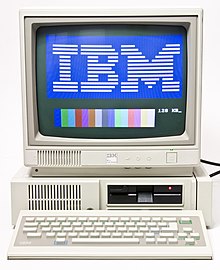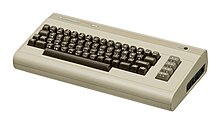- Pronouns
- He/Him
Also, I found the following sad - "As for who will suffer from this trend, medium-sized companies that make A-AA titles for the Japanese market with graphics that do not work on the Switch will have no way to reach out to consumers. Simply put, they will die."The number of PlayStation hardware has been a topic of discussion for a while now.
Putting aside the credibility of this figure, I have been thinking a lot about the PlayStation hardware from a developer's point of view for a while now, and when I get together with a group of people, we often talk about how "PlayStation is in trouble these days.
From a developer's point of view, the best thing would be for games to sell well on all hardware, but I honestly think, "Good luck, SIE! I'm rooting for you! However, it is true that the situation is so bad that it is impossible to say "I'm rooting for you! But I don't want to be negative. I want you to understand the struggle between these feelings.
So, I would like to share one of my current thoughts on PlayStation.
Hard to develop
Nintendo has been allowing individual developers to register on their developer portal site for quite some time now, allowing them to buy development tools and release software, but PlayStation is still only open to corporations.
This is just the beginning. Anyway, PlayStation's portal site (I'm going to blur out the details because I'm afraid I'll get caught under NDA) is not easy to use. As is well known, the core of SIE has moved to the U.S., so even major information is in English (*), and support is very slow and unresponsive, as if there is no coordination between departments when it comes to something a little more intrusive. The search function is poor, making it difficult to find the information you need, and the guidelines that must be followed at the time of release are strict, complex, and difficult to understand. I don't want to go so far as to say that this is the general consensus, but it is unanimously said that it is difficult to develop anyway. There are many other things like [NDA] is [NDA] or [NDA] is [NDA] and magi[NDA].
(*Posted: The wording has been changed as it seems to have been improved now. (*Addition: The wording has been changed as it seems to have been improved now.)
Game development environments have democratized rapidly in the last decade, so developers can easily compare the development environments of Nintendo Switch and Steam with those of PlayStation. The examples are carefully written, and the forums are available in Japanese (and the response time is fast!). Steam has a highly functional console with a one-stop shop for everything from store information to uploading builds, and the manuals are written in Japanese, although support is a bit limited.
Unlike large companies that have the resources and manpower to develop a PS version, small and medium-sized companies and indies are directly affected by this situation. Inevitably, the software lineup supplied for the PS will be exclusively that of the major companies. Especially overseas, there is also the option of XBOX instead of PS.
At one time, PS was very focused on indie games, and was the leader in Japan as well, with SIE (SCE) having a variety of indies in the TGS indie corner. However, the enthusiastic staff at that time was disbanded and became just drinking buddies (?), so the current situation is not so different ......
No sales.
No sales. Of course, there are variations depending on the situation, whether it is a AAA title or not, whether it is released on all platforms or not, but for example, if you release a PC version first, and later release a Switch version and a PS4/PS5 version, it will not sell very well. Moreover, development costs are, as mentioned above, PC << Switch <<< PS, so .......
If you don't include PS in the initial release, they won't even pick it up! I sometimes hear stories like this, but I wonder if it would be a different story if it were a PS-only game. I'm looking for an expert.
From a developer's point of view, we can only see the numbers, so it's hard to say what the cause is... maybe it's because they rarely hold streaming events like Nintendo Direct or Indie World that users expect, or maybe it's because the store is hard to navigate and only big titles are sold, or maybe it's because they don't have a regular sale like Steam does. Or because there are no regular sale festivals like Steam. ......
Or, as the data at the beginning of this article shows, it is convincing to say that PS market share is simply very low, and it is often said that the generational shift from PS4 to PS5 is failing. Whether the reason for this is the work of resellers, the lack of supply itself, or problems with exclusive titles is a mystery. ......
(Come to think of it, PS Plus has been quite successful as a subscription, but I haven't heard of any developers saying they had a great time with PS Plus. ......)
In the end, a platform that sells well even if it's insanely hard to develop for is justified. That's how consumers have made a living until now. Steamworks, Appstore Connect, and Google Play Console all know this, and they are all very focused on consoles.
As game development becomes more democratized and individuals and teams become more powerful, the competition between platforms will become even fiercer. Compared to the past, the power relationship has completely reversed. I think this is the critical point.
PCs are encroaching on the market.
Japanese Steam users are growing rapidly, reaching record highs, and the culture of playing games on PCs is spreading in Japan - AUTOMATON
Valve has released its Steam Hardware & Software Survey for March 2022. Some of the data in it is causing a stir.
It's been talked about a bit, but the PC gamer population in Japan is growing like crazy, and the world is even more so. Eldenring's sales are mostly on PC (16.6 million units through August, but developers can use certain techniques to estimate Steam sales, so you can see the percentage).
Until the 2010s, the trend was to just roll out multiple versions for PC, PS, and XBOX, but as development costs have skyrocketed, it has become "if the PC version sells the best and is the easiest to make, then why not just stick with PC". As developers at the end of the market start to release games mainly for the PC, users will also start to think, "Well, I'll just buy it for the PC since it has multiple versions anyway," and a negative spiral will begin. No, it has already started.
As for who will suffer from this trend, medium-sized companies that make A-AA titles for the Japanese market with graphics that do not work on the Switch will have no way to reach out to consumers. Simply put, they will die.
Even though the number of PC users has exploded, consumers are still strong in Japan, and there are probably very few children (elementary to junior high school students) who play PC games in particular. If the same makers who used to make good old-fashioned consumer AA titles like the ones we played in the past were to make games in the same vein today, their sales channels would be extremely limited.
Just as "games that are popular on smartphones" have limited game design, I think this is a great loss for the game culture, where game styles are limited by the convenience of the platform. I think this is a great loss for the gaming culture. ......
If the Switch had been a huge flop five years ago, I sometimes wonder if consumer games would have died out early because games for PCs and smartphones would have stopped selling.
Conclusion
The triple burden of difficulty in development, lack of sales, and being overwhelmed by PCs
Compared to Nintendo, which seems to be making strides, such as having their representatives come to visit at game events like Bitsummit and the Indie World initiative, they are physically and mentally distant from us. Where are they? Only "ex" SIE!
How should we compromise?
As I wrote at the beginning of this article, the most favorable environment for developers is a situation where "no matter what hardware we release our games on, they reach the fans of that hardware and sell well," but that doesn't mean that "we should do our best to rebuild SIE!" It's a business matter, and SIE has no choice but to work hard on its own.
So, I think we (developers) should share the sense of crisis that "this is what's happening". I am sure that this feeling will be heard. Will they reach us? But even if I told the support directly, "These guidelines are absurd," they didn't listen to me at all, did they? If you have any thoughts on this matter, please comment or DM me. (-> We received many. Thank you)
And if you have any news, positive or otherwise, please speak up. The more positive the voices are, the healthier it will be.
By the way, I've heard from several sources that a (current) SIE person was at BitSummit recently, so SIE may already be taking action. Good luck with that. Also, please release a new ParappaRappa.
Very interesting if the translation is correct. It is good to see how PS Plus might be doing since we get no data. Interesting that developers feel the need to save a platform.
So it seems perception among some Japanese developers is that even A-AA games may not work on Switch (?) (not "harder to optimize" but will just plain not work) I hope this is a translation issue. :-(






